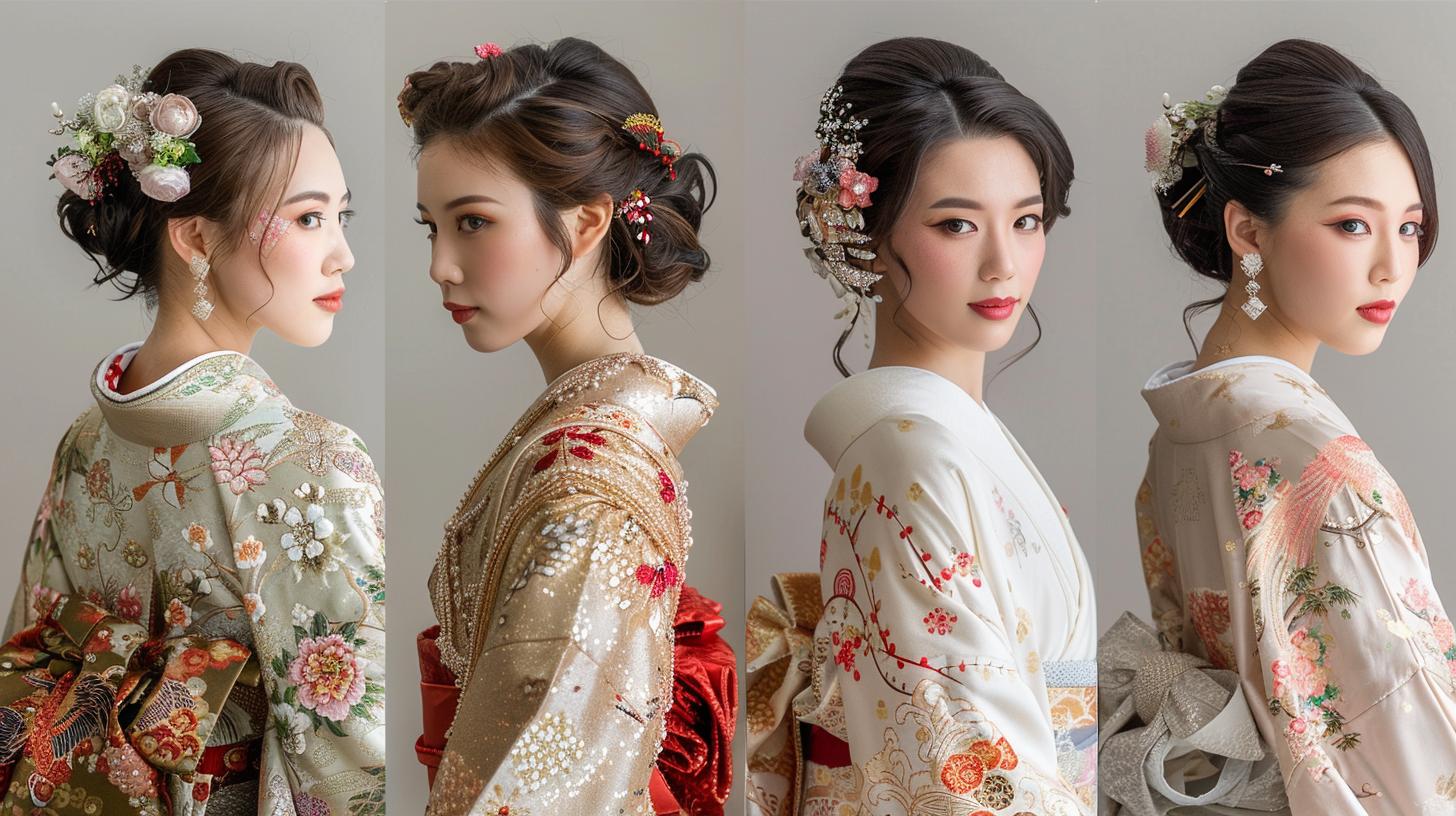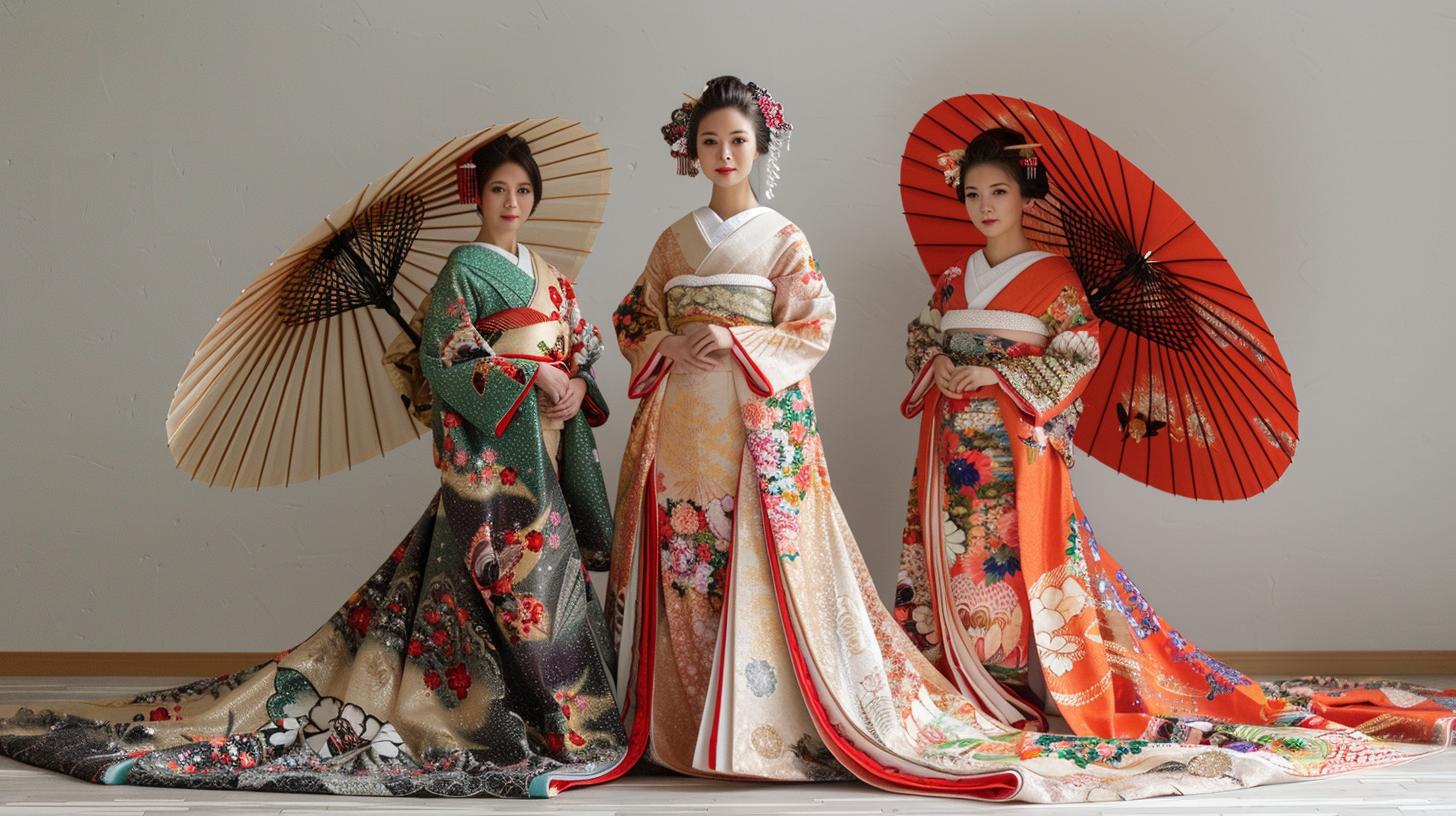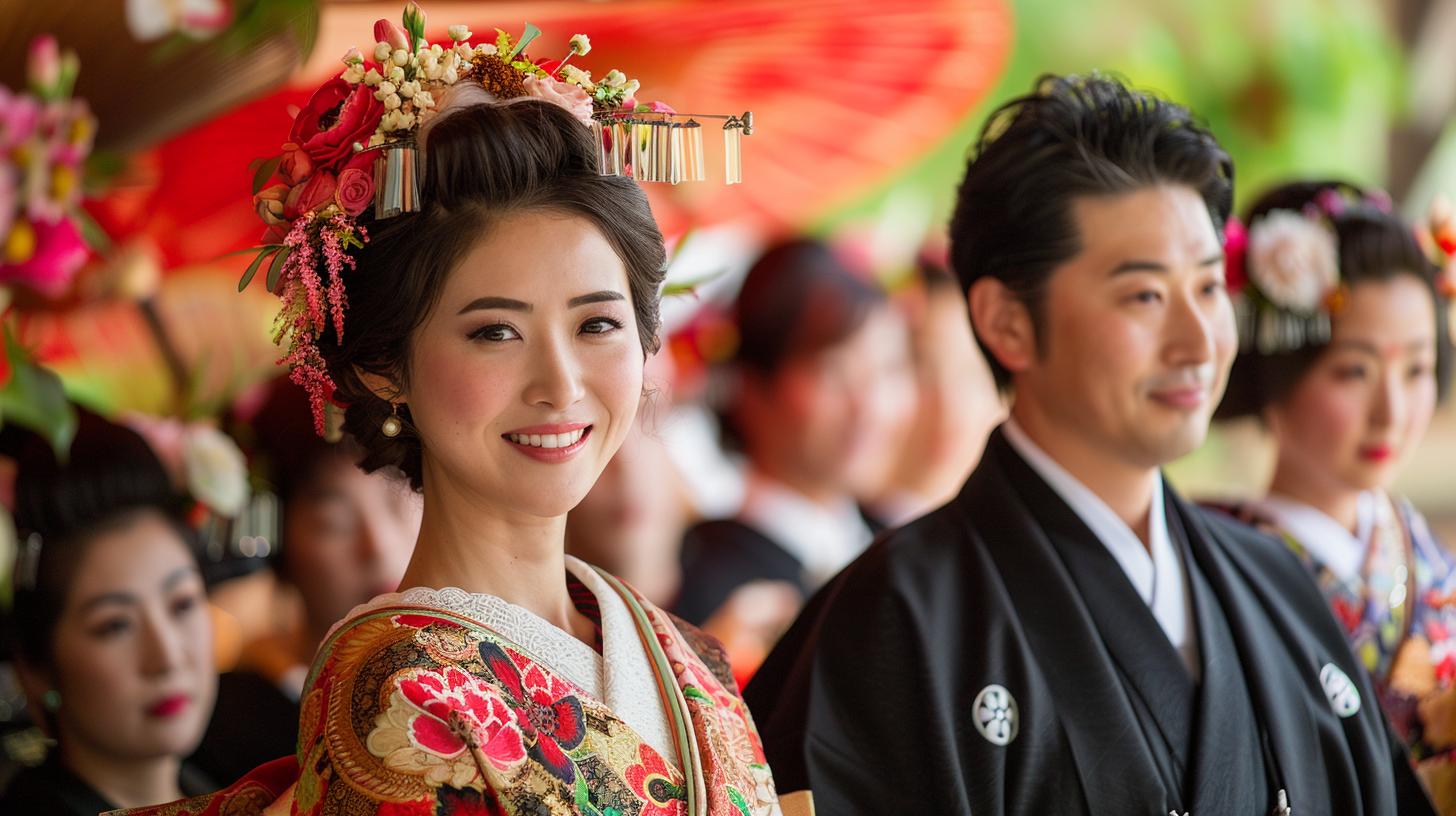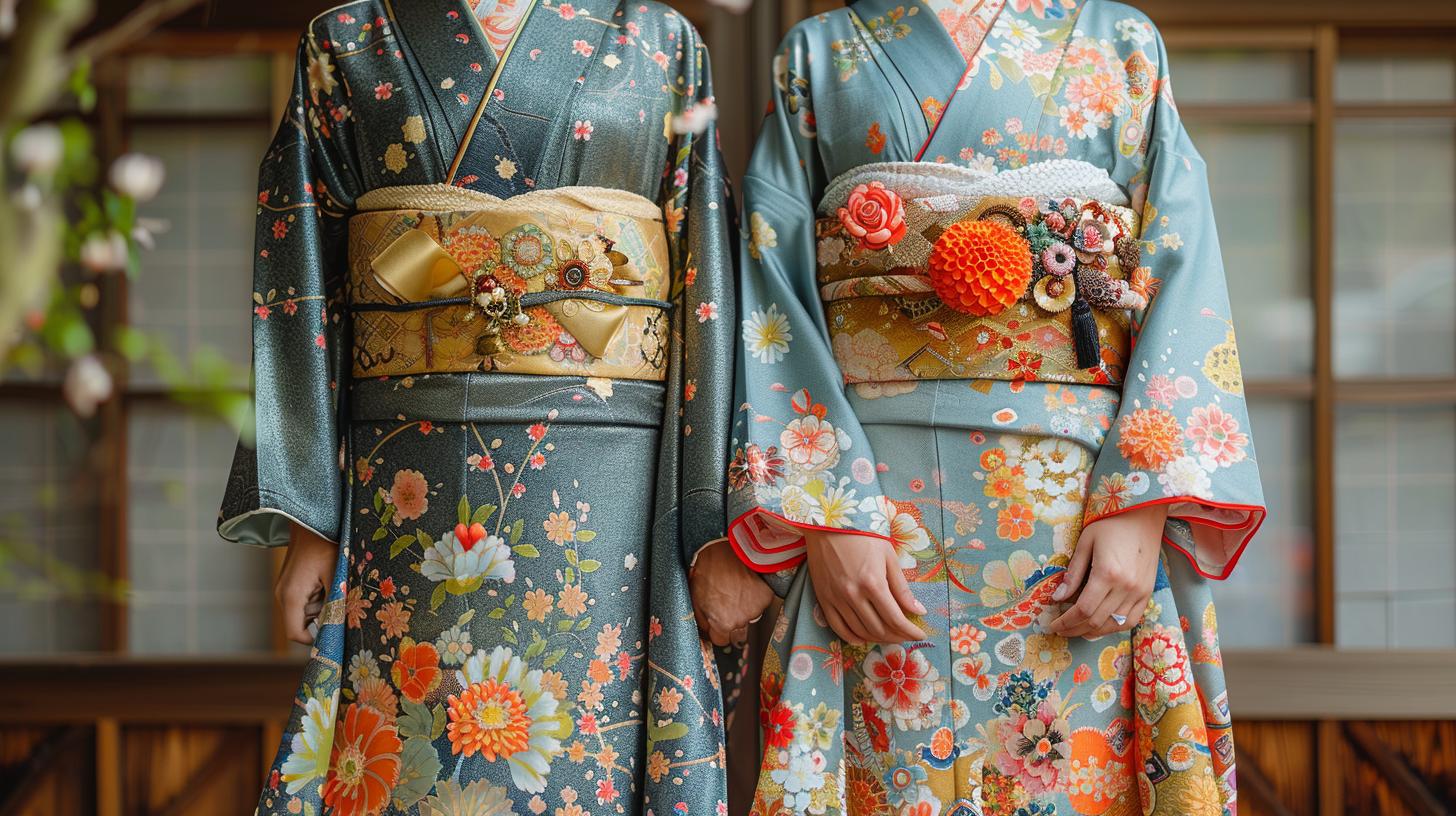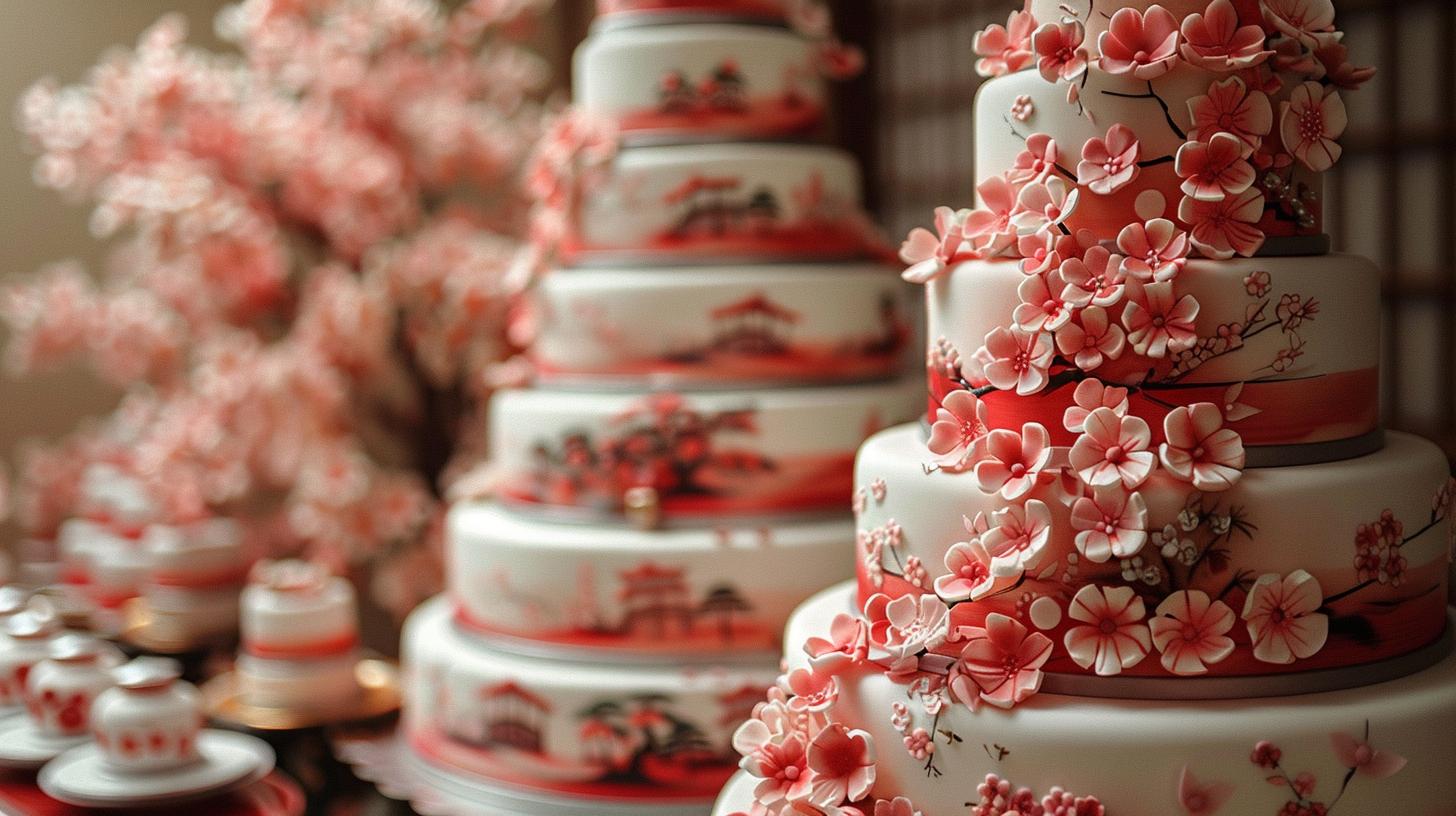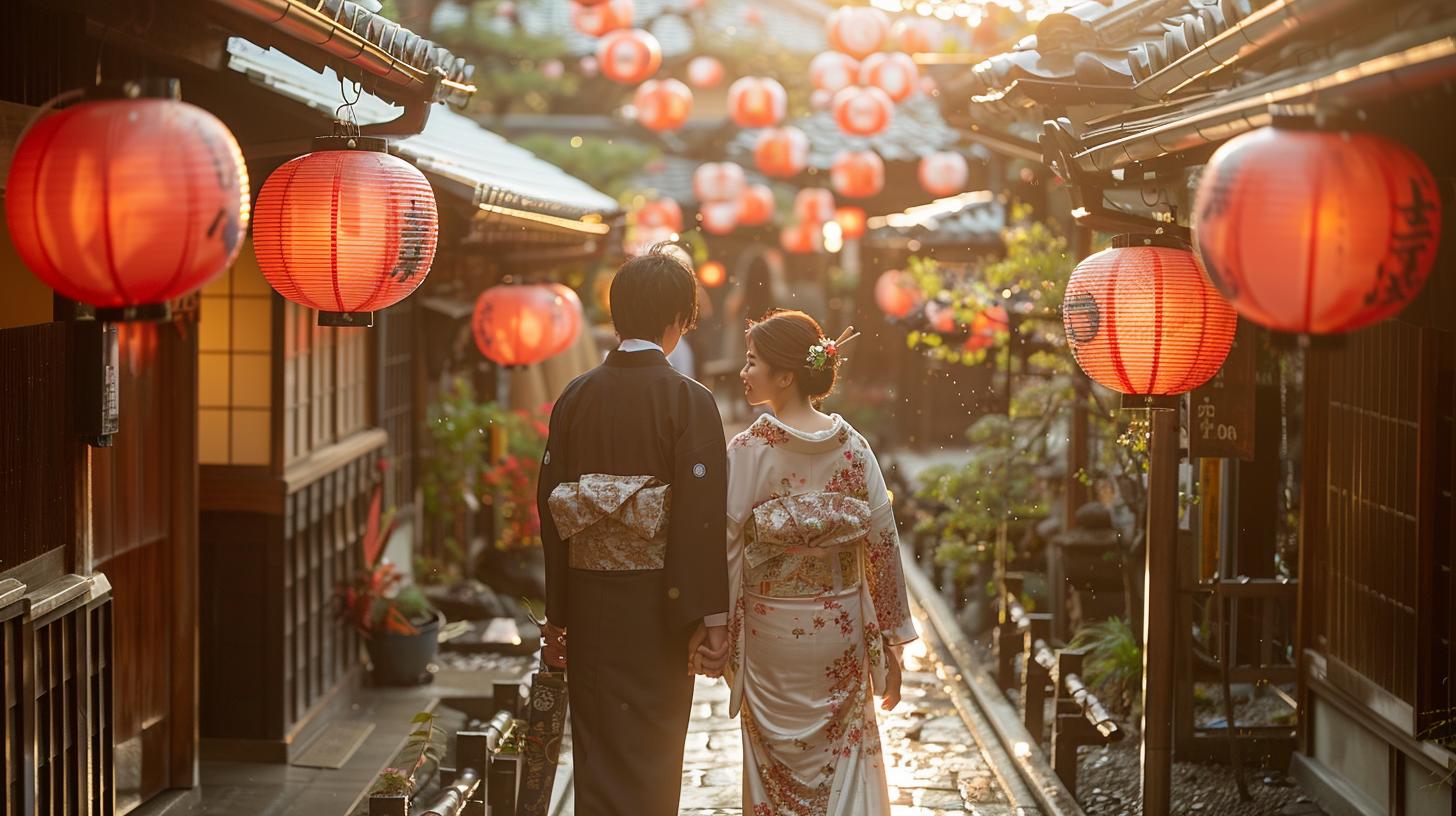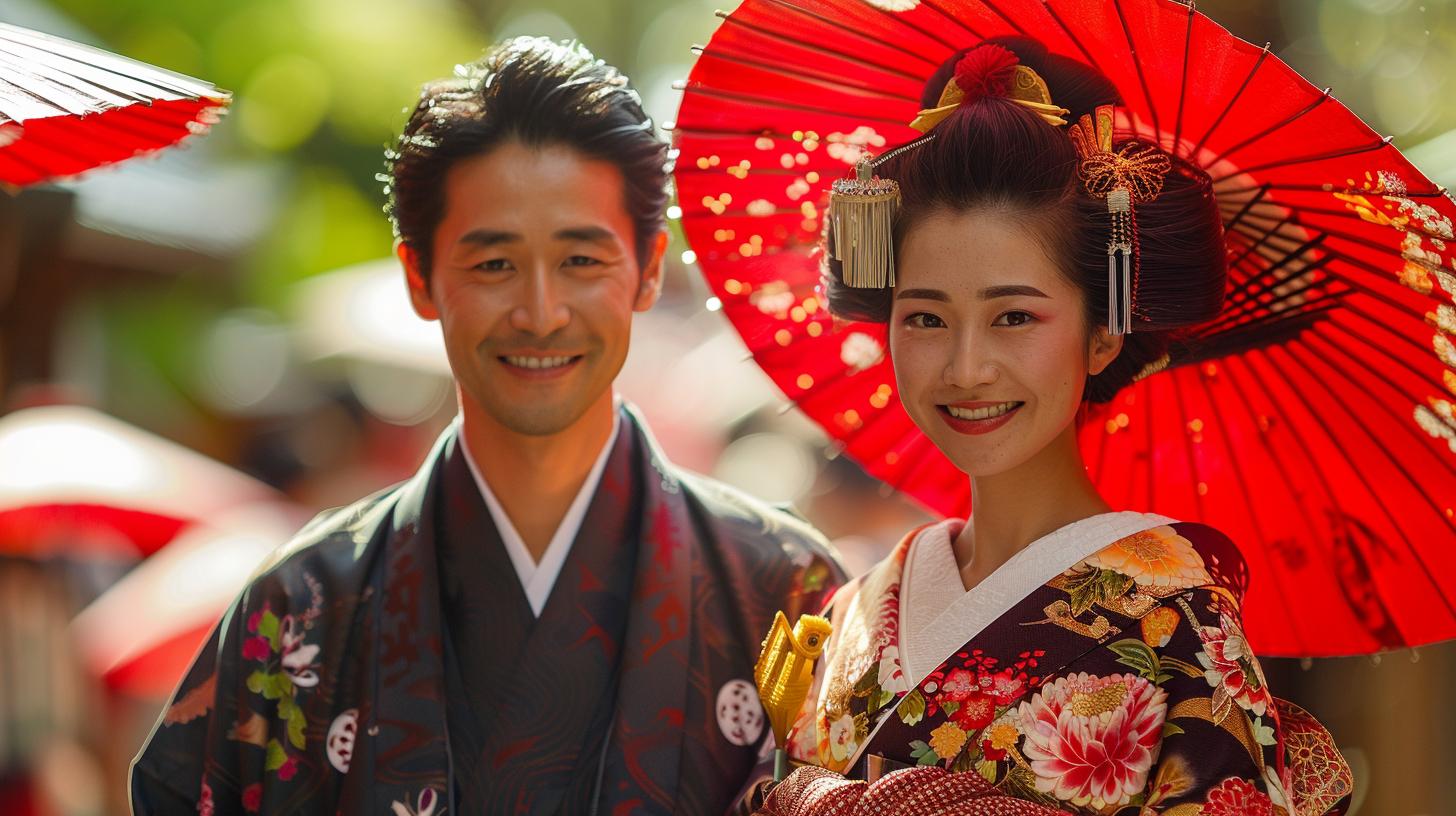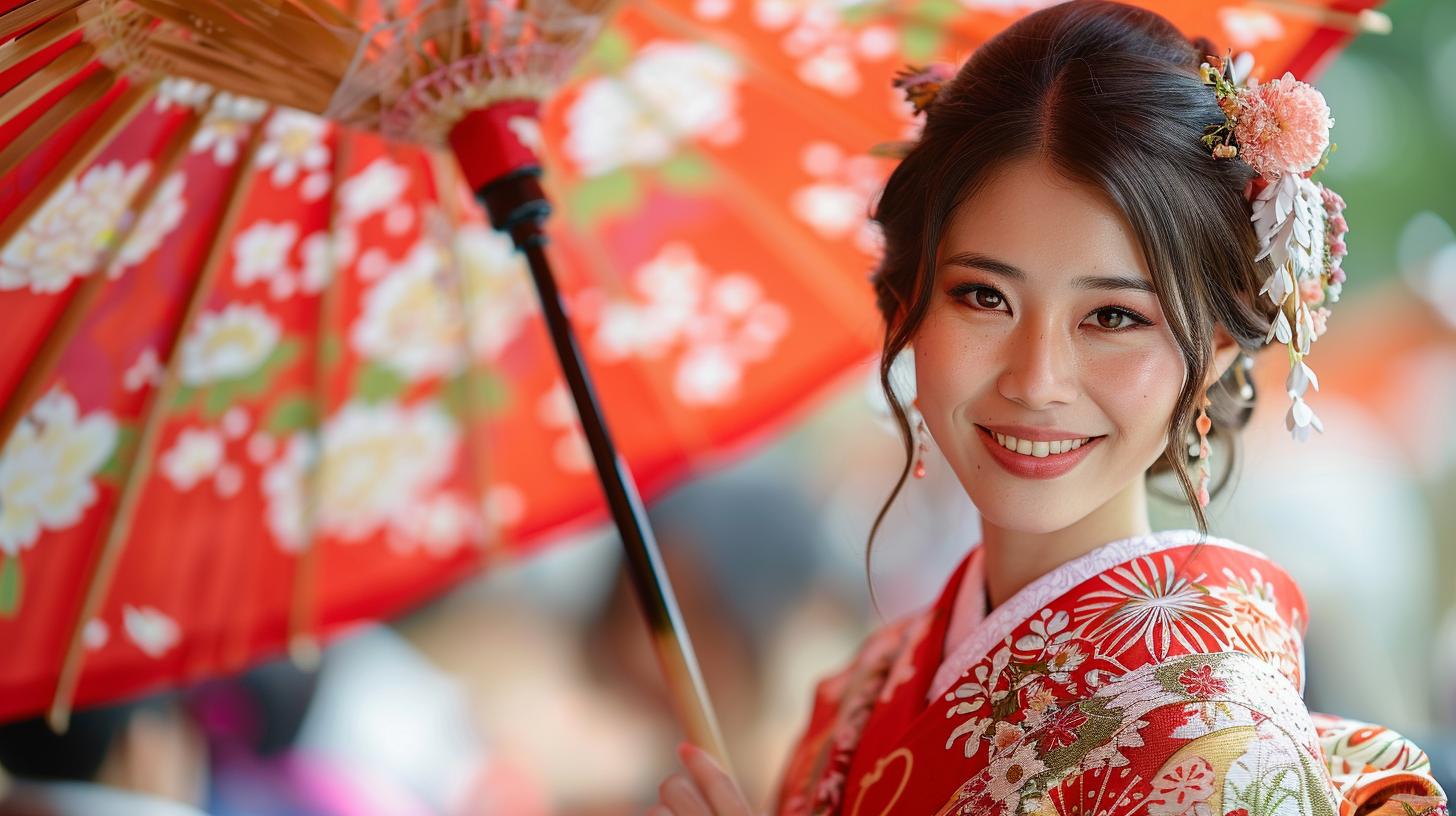Traditional Japanese Wedding Dresses: Exploring the Beauty and Meaningiology of Japanese Bridal Kimonos
The traditional Japanese wedding dresses hold deep cultural significance and intricate symbolism. From the pure white shiromuku kimono representing purity to the groom’s black montsuki kimono with family emblems, each element carries special meaning.
These traditional Japanese wedding dresses are designed to reflect the rich heritage of the culture, making each piece unique to the bride. The japanese wedding garment is not only a beautiful attire but also a representation of centuries-old customs.
On this special day, a bride’s choice of dress, such as the exquisite traditional japanese bridal dress, speaks volumes about her heritage and love story. The japan wedding dress serves as an emblem of her cultural identity, with many brides opting for the traditional wedding dress japan to honor their roots.
The choice of dress also reflects the bride’s personal style and the significance of the occasion, making it a treasured memory for years to come.
These bridal attires blend Japanese tradition with Western influences, creating a unique and beautiful celebration.
Traditional Japanese wedding ceremonies, held at Shinto shrines, are filled with symbolic rituals, while gifts like goshugi reflect well wishes and appreciation from guests. Many ask, what do Japanese brides wear? The answer often includes the elegant traditional Japanese wedding attire that tells a story of legacy and cultural pride.
The japanese wedding dresses are often adorned with lucky charms, symbolizing good fortune and happiness for the couple. As the day unfolds, the bride hopes that her bridal gown will be a source of joy and another cherished memory for years to come.
The anticipation builds as the japanese wedding attire is revealed, showcasing the artistic details that define Japan’s wedding culture. Many brides choose to incorporate elements from both traditional and modern styles, making their ensemble a true reflection of their unique journey.
Kimono as a Symbol of Tradition
Traditional Japanese wedding dresses hold deep cultural significance, with the kimono being a key symbol of tradition. Let’s explore the meaning and evolution of these iconic garments, including the japanese traditional wedding dress which is cherished by many.
These garments, such as the iro uchikake, showcase vibrant colors and intricate designs that captivate the beauty of Japanese culture. The yumi katsura collection is particularly renowned for its exquisite craftsmanship and innovative designs, appealing to brides who wish to stand out on their special day.
Every detail, from the fabric to the style obi, reflects the artistry of skilled kimono artisans who pour their heart into creating these masterpieces. The kimono and other traditional attire are not merely clothes; they are a narrative of the bride’s journey and cultural heritage, embodying the essence of ancient japanese wedding dress traditions that continue to inspire modern designs.
The Significance of Traditional Japanese Wedding Dresses
The intricate designs and symbolism woven into these garments, such as the japanese bridal garment, make them an essential part of traditional weddings.
The traditional japanese wedding gown is often accompanied by a style obi that enhances the elegance of the outfit, reminding us of the beauty of tradition and the importance of style and grace.
The use of the white kimono, along with the maru style arrangements, adds a touch of sophistication to the bridal look, while the groom will wear a montsuki that complements the bride’s traditional attire.
This harmony between the couple’s outfits symbolizes their commitment and shared journey, making their wedding day even more meaningful.
History and Evolution of Bridal Kimonos
The history of bridal kimonos dates back centuries, evolving alongside Japanese culture and customs. These garments, including the japan traditional wedding dress, have stood the test of time, preserving tradition while also adapting to modern influences.
The evolution of bridal kimonos reflects the changing dynamics of Japanese weddings over generations. In Kyoto, many brides still prefer traditional styles, emphasizing the importance of the kyoto kimono in contemporary ceremonies.
Notably, the legacy of these kimonos is maintained through various global stores that specialize in authentic Japanese attire. As brides choose to embrace their cultural heritage, the traditional japanese wedding dresses continue to shine in the spotlight, captivating hearts all over Japan.
This journey through time also includes the ancient japanese wedding dress, which showcases the roots of this beautiful tradition, further highlighting how the kimono worn today is a reflection of deep-seated traditions and cultural pride.
Elements of Japanese Bridal Attire
Japanese bridal attire is rich in symbolism and tradition, with each element holding special meaning. Let’s explore the significance of the main components of a traditional Japanese wedding ensemble:
Shiromuku: The Symbolism of the Pure White Kimono
The shiromuku kimono, a symbol of purity and light, is a traditional choice for Japanese brides.
Its white color represents the bride’s purity and the bright future ahead. The intricate embroidery and craftsmanship of the shiromuku make it a stunning piece of art that embodies the essence of Japanese culture.
The traditional Japanese wedding gown is often complemented by vibrant accessories that add to its elegance. On the day of the wedding, the bride’s her dress becomes a canvas of dreams, embellished with the hopes and love of the couple.
Many brides also wear tabi socks, which enhance the traditional attire, providing both comfort and style.
Montsuki: The Groom’s Traditional Black Kimono
Contrasting with the bride’s white ensemble, the groom typically wears a montsuki, a black kimono adorned with the family crest. This garment symbolizes the groom’s heritage and role within the family.
The montsuki is a classic choice that exudes elegance and tradition, reflecting the values of traditional Japanese wedding clothes. During the reception, the groom will change into a japan wedding gown to blend tradition with contemporary styles.
The couple’s outfits are a testament to their shared love story, intertwining their past with their future. As they celebrate with their bridal party, the harmony of their japanese wedding attire enhances the joyful atmosphere, while the groom will wear traditional tabi socks that complement his formal wear.
This blend of tradition and modernity is becoming increasingly popular among couples today.
Wataboshi and Tsunokakushi: Essential Bridal Accessories
In addition to the kimono, Japanese brides also wear special accessories that hold cultural significance. The wataboshi, a white veil that covers the bride’s face, symbolizes purity and modesty. On the other hand, the tsunokakushi, a decorative headpiece, represents the bride’s submission to her husband.
These elements are part of a comprehensive japanese wedding attire that tells a deep story. The traditional socks, including tabi socks and tabi socks, and other accessories, such as the horns and uchikake kimono, further enhance the bridal look, making it a celebration of love and tradition.
The careful selection of these items reflects the couple’s desire to honor their heritage while creating new memories on this significant day. The combination of traditional and modern elements ensures that each bride’s look is uniquely her own.
In the end, the traditional japanese wedding dresses and their intricate details make every bride’s day an unforgettable experience, celebrated all over Japan. As the couple embarks on their journey together, the memory of the date and the beauty of their bridal gown will always remain in their hearts, a testament to their love and the stories they will create together.
With the reception filled with laughter and joy, these moments will resonate through time, reminding them of the beauty of their union. The groom will often reflect on how much more meaningful the ceremony becomes when surrounded by loved ones, all wearing traditional attire that enhances the vibrant atmosphere, including the exquisite ancient japanese wedding dress that signifies the enduring legacy of their cultural heritage.
Blending Japanese and Western Influences
Incorporating Western Wedding Dresses in Japanese Ceremonies
Japanese wedding ceremonies often incorporate elements of Western wedding attire, blending traditional Japanese kimono with modern Western wedding dresses. This fusion of styles allows brides to honor both their heritage and embrace contemporary bridal fashion trends.
The japanese style wedding dress has become increasingly popular among modern brides. Many brides opt for the white wedding gown, a symbol of purity and new beginnings, alongside the traditional kimono for a stunning visual representation of their journey.
Additionally, the japanese wedding dress traditional styles often reflect the rich cultural heritage of Japan, providing a unique take on bridal fashion. For the bride, the choice of outfit is crucial, as it highlights her personality and the cultural significance of her attire.
The Role of Formal Attire Changes Throughout the Event
During Japanese weddings, couples may change from traditional kimonos to formal Western attire at various points in the ceremony. This transition symbolizes the blend of Japanese and Western cultures, showcasing the couple’s respect for tradition while embracing contemporary customs.
As the concept legacy story of these traditions continues, it allows for a beautiful merging of styles. The bride and groom often select their outfits thoughtfully, ensuring they reflect their personalities while honoring their shared cultural backgrounds.
The bride and groom wear outfits that encapsulate their journey, making a significant statement about their unity and love.
Traditional Japanese Wedding Ceremonies
Venue and Rituals at Shinto Shrines
Traditional Japanese wedding ceremonies often take place in Shinto shrines, sacred locations rich in history and spiritual significance. The serene ambiance and traditional architecture provide a symbolic backdrop for the sacred union of the couple.
The day of the wedding is meticulously planned, reflecting the couple’s belief that every detail contributes to the sanctity of the event. Family members and close friends gather to witness the union, making it a momentous occasion for all.
Many couples choose to have a shinto wedding ceremony, which adds a layer of tradition and spiritual depth to their celebration.
During the ceremony, rituals such as purification with water and the exchange of vows are performed to honor tradition and invoke blessings upon the newlyweds.
The presence of family and close family members adds to the meaningful atmosphere of the sacred venue. Many couples choose to wear a stunning wedding dress or a traditional kimono wedding dress, often opting for designs that are inspired by the legacy story of their families.
The bride and groom are often adorned in luxurious fabrics, with the bride wearing a bridal kimono that may feature intricate maru style obi, a traditional belt that adds elegance to her attire.
Additionally, the katsura bridal house offers exquisite options for brides looking for unique pieces that blend both traditions.
Shinzenshiki: The Sacred Unification Ceremony Before the Gods
The Shinzenshiki ceremony, also known as the sacred unification ceremony before the gods, is a central aspect of traditional Japanese weddings. This ritual involves the couple making offerings to the Shinto deities, seeking their blessing and guidance for a harmonious and prosperous marriage.
The class wedding experience is enhanced through the couple’s attire; many brides opt for the exquisite japanese wedding kimono that symbolizes their cultural heritage. The bride will often wear the white wedding kimono during the ceremony, which signifies purity and the start of a new chapter in her life.
Through the Shinzenshiki ceremony, the couple demonstrates their commitment to each other and to the divine forces that oversee their union. This sacred event symbolizes the spiritual bond between the couple and the eternal nature of their love.
The service concept design of such ceremonies often incorporates themes that reflect the concept design concept of the couple’s journey together. The groom wears a traditional hakama, complementing the bride’s attire beautifully, symbolizing their unity.
These gifts hold cultural and traditional meanings, reflecting good wishes and gratitude in a symbolic manner. The information company and traditions behind these gifts are often shared among families, enhancing the legacy story of the couple.
As guests present their gifts, they often include monetary offerings known as goshugi, which contribute to the couple’s new life together. The reason for the thoughtful selection of gifts is deeply rooted in tradition, underscoring the importance of these exchanges.
Goshugi: Monetary Wishes from Guests
Guests typically present goshugi, a monetary gift placed in a special envelope, during traditional Japanese weddings. This practice symbolizes the guests’ well wishes for the couple’s future together and their contribution to starting their new life.
The stores flagship in Tokyo often feature these special envelopes, enhancing the experience. In some cases, guests may also express their wishes through various payment methods, including pay venmo visa, diners club discover, or even american express apple.
You can find unique designs that reflect the couple’s legacy story in many of these flagship stores. This modern approach to gifting showcases the evolving nature of wedding traditions.
Hikigashi or Hikidemono: Tokens of Appreciation for Attendees
As a gesture of appreciation and thanks, the newlyweds commonly offer hikigashi or hikidemono to their guests.
These items, such as sweets, ceramics, or luxurious towels, symbolize the couple’s gratitude for the presence and support of their loved ones during this special occasion. Many couples also choose gifts that reflect their own legacy story service, such as lucky charms.
The bride and groom may also include items that represent their respective cultures, creating a harmonious blend of traditions. In addition, they might select items that come from the katsura bridal house, known for its exquisite craftsmanship.
The couple hopes to bless the couple with their thoughtful selections.
In conclusion, the wedding dress is not just a garment; it encapsulates a story, a legacy story that begins on the day of the ceremony.
For many, this dress wedding dress serves as a cherished item, representing love, tradition, and the promise of a future together. It is said that those who wear the wedding dress yumi or the elegant dress yumi yuzen are blessed with good fortune, as they embark on their love story together.
The couple’s journey is celebrated not just through the attire, but also through the meaningful exchanges and rituals, uniting their past and future. The porter kimono collection and the porter kimono yumi are also renowned for their elegance, highlighting the intricate artistry of Japanese textiles.
Today, modern Japanese weddings continue to reflect these traditions, evolving yet rooted in the ancient times of their ancestors.
.

